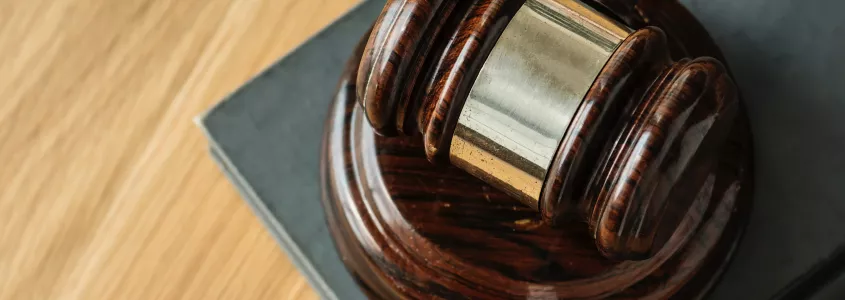
Table of contents
Today we would like to talk to you in depth about a crime that affects assets and the socio-economic order. It is typified and regulated in Title XIII of the Penal Code and, specifically, in articles 257 and subsequent articles. We are talking, of course, about the offence of asset stripping. Its purpose is none other than to protect creditors and the executive activity aimed at guaranteeing the payment of pecuniary debts.
Definition of the offence of embezzlement of property
This offence, within the Criminal Code, refers to two actions:
- Seizure of assets to the detriment of the creditors of a debt.
- Acts of disposal of assets or creation of obligations against a creditor with the aim of hindering, preventing or delaying an administrative, extrajudicial, judicial, executive or enforcement procedure to carry out a seizure.
Both of these actions carry prison sentences of between one and four years under the current Criminal Code. In addition, the same punishment applies to those who carry out acts of disposition, who incur obligations or who deliberately reduce or conceal their assets with the aim of preventing the execution of the seizure and thus avoiding the payment of their civil liabilities.
Furthermore, the Penal Code does not distinguish between different types of nature of the debt or obligation. Nor does it make distinctions in cases where the creditor, instead of being a natural person, is a legal or public person. Similarly, it does not consider it relevant that, after the commission of the offence, bankruptcy proceedings are initiated.
Having said this, we can conclude that the offence of asset stripping is a conduct by which a debtor tries to eliminate or, at least, decrease the amount of his assets with the purpose that the creditor with whom, at a given moment, he contracted a debt can collect it. Moreover, its regulation aims to protect the principle of universal patrimonial responsibility, which is contained in Article 1911 of the Civil Code.
Increased penalties in cases where the offence is committed against a public body
Before continuing, we should mention the fact that, when the debtor intends to avoid paying a debt owed to a public body, such as the Social Security or the Tax Agency, by reducing or eliminating his assets, the Criminal Code establishes prison sentences of between one and six years and fines of between twelve and twenty-four months.
Other variants of the offence of lifting of property: incomplete relationship
In Article 258 of the Criminal Code we find the fact that the law provides for another form of the offence of the lifting of property. Specifically, this is known as an incomplete relation of goods to the detriment of the creditor.
This article of the Criminal Code establishes fines of between six and eighteen months and prison sentences of three months to one year for all those who, in the middle of an administrative or judicial seizure procedure, present an incomplete list of assets and goods with the purpose of preventing the creditor from satisfying his debt.
But what is meant by an incomplete statement of assets? Quite simply. It is an action by which a person submits an account in which all the assets he or she supposedly owns are listed, but which conceals the use and enjoyment of assets belonging to third parties and in which he or she does not provide any justification for this.
To help you understand this better, here is an example. A person facing enforcement proceedings for a debt owed to a creditor fears that his car may be repossessed. To avoid this, he puts the car in the name of a close relative by pretending to sell it. However, he continues to use the car as it was merely a ruse to prevent it from being used to satisfy the debt owed.
The offence of concealment by incomplete asset accounting can be committed by a natural person, but also by a legal entity. In fact, the Penal Code establishes these penalties for this type of entity:
- A fine of 2 to 5 years if the offence of embezzlement was committed by a natural person against a public administration and therefore carries a penalty of more than 5 years' imprisonment.
- A fine of 1 to 3 years if the offence was committed by a natural person against a private entity and therefore does not carry a penalty of more than 4 years' imprisonment.
- In all other cases, the legal person responsible will have to pay a fine of between 6 months and 2 years.
The Supreme Court's doctrine on the confiscation of assets
There have been several occasions over the last few years in which the Supreme Court has issued rulings with the capacity to establish jurisprudence in the field of this offence. Here we would like to talk about the most important and interesting ones.
The first two judgments of the Supreme Court to which we must refer are 228/2013, of 22 March, and 925/2013, of 4 December. In these judgments, it is established that the "alzado de bienes" is a crime of simple tendency. This means that, in order to establish its commission, it is not necessary that a prejudice against the rights of creditors is carried out. It is sufficient that a series of actions have been carried out with the aim of causing such damage, even if it does not materialise.
Special mention should be made of the ruling issued by the Supreme Court on 16 February 2017 on this offence. Specifically, it referred to a case in which a company, which had been claiming insolvency for some time, placed a series of orders for goods, which it paid for by means of promissory notes that it knew perfectly well would end up being unpaid as it did not even possess real estate or movable assets with which to face a seizure. It was even deduced that this business had stopped its activity, had started an insolvency proceeding and had created another company to which it diverted its suppliers, clients and activity in general. All of this, as is evident, to the manifest detriment of the natural, legal and public persons to whom it owed debts.
This was the ruling that gave rise to the fact that all actions aimed at diverting and separating from the original assets of an entity all or part of its personal and material assets with the aim of not meeting a debt by executing its assets were classified as this offence.
Conclusions
In short, the offence of concealment of assets can be defined as a kind of ruse that has long been used by natural and legal persons to evade their responsibilities vis-à-vis their creditors. Due to the difficulty, on many occasions, of proving the concealment of assets, it can be said that even many of them have managed to get away with it. However, the doctrine has been adapted to make it increasingly complex.
If you would like more information, please contact us for a consultation.

"Anywhere in Spain"
With our online appointment system you will have immediate advice without the need for face-to-face visits or travel.
One of our lawyers specialized in your area of interest will contact you to formalize an appointment and make your consultation by video call.

Add new comment